5 Ways to Get Off the Beaten Path in Thailand
Break away from the crowds in Thailand and discover secluded islands, secret temples, and pristine beaches you might have all to yourself.
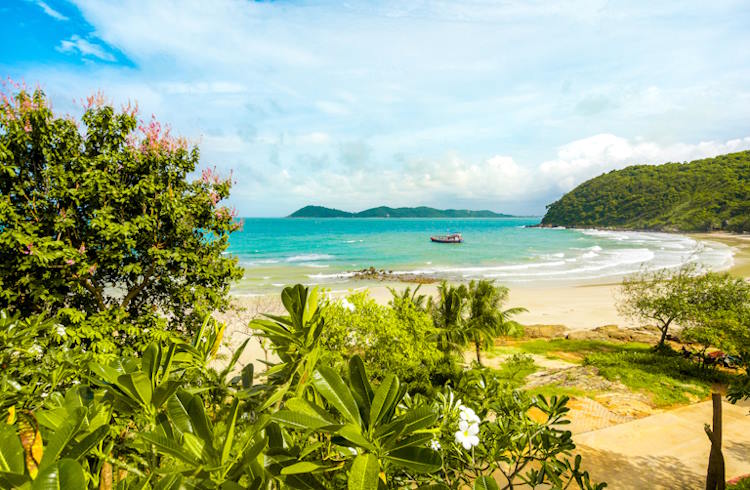 Photo © Getty Images / holgs
Photo © Getty Images / holgs
Thailand has changed since my first trips to the country, when pan-handling elephants still trawled the backpacker ghetto around Khao San Road and tripped-out hippies in elephant-print pants still shuffled among the trishaw riders.
The elephants and the hippies have long since disappeared, but the elephant-print pants are to be seen in greater profusion than ever and the last of the trishaw riders are still pedaling onwards (if you know where to find them).
Bangkok is one of the world’s most popular city destinations yet, even in the Thai capital, it only takes a little determination to find uncrowded and almost completely unknown locations. More than a third of Thailand is still covered in jungle and there are more than 1,988mi (3,200km) of coastline so – even within easy reach of the city, and among surprisingly accessible islands – there’s endless potential for getting off the beaten track.
- Bangkok’s hidden spots
- The river islands of Bangkok
- Exploring the Golden Triangle
- “Paradise” overlooked: accessible places without the crowds
- Where to find pristine beaches and islands in Thailand
Bangkok’s hidden spots
I spent a lot of time based in Thailand (shortly before the pandemic) researching a book called simply Secret Bangkok. In what was famous at the time as the world’s number-one city destination, it had seemed a tall order to hunt down more than 100 secret sights, yet the city that’s known officially as Krung Thep Maha Nakhon Amon Rattanakosin Mahinthrayutthhaya Maha Dilokphop Noppharat Ratchathani Burirom Udom Ratchaniwet Maha Sathan Amon Phiman Awatan Sathit Sakkathattiya Witsanukam Prasit (usually referred to in Thai simply as Krung Thep) is home to many well-kept secrets.
You might need to work hard – or hire a very good guide – if you want to meet the female spirits of Bangkok’s most haunted temple (Wat Prasat) or to visit the community that sells flammable gifts for ghosts (in Charoen Chai). Few people are familiar with the renegade Laotian musicians who still create famous flutes (at Baan Lao – the Laos House) or Bangkok’s “Little Lisbon” Portuguese quarter (locals know it as Kudichin). Just 5mi (8km) south of city center, there’s even a temple decorated with images of Mickey Mouse, Captain America, Che Guevara, and David Beckham!
The river islands of Bangkok
Greater Bangkok is divided by the great Chao Phraya River and criss-crossed by a spider’s web of canals. Visitors are often surprised to find that the nearest island lies just a tuk-tuk ride from the business district. Bang Krachao is a 6mi2 (16km2) island (created by a man-made canal that cut off the neck of the oxbow) lying just south of the city. It’s the ideal place to escape the clamour of the city by spending a day cycling and picnicking in rural backwaters.
Koh Kret (to the north and technically in Nonthaburi district) is a smaller island that is famous for its fishing communities and ancient pottery traditions.
Even within minutes of the city center there are canal communities that tourists rarely see. From Pra Athit Pier you can take an excitingly speedy longtail boat into the western canals that are still home to descendants of the Mon people.
Exploring the Golden Triangle
From Doi Inthanon Mountain – known as the “Roof of Thailand” and considered a part of the Himalayan Range – down to the relative lowlands of the Mekong River, Thailand’s northern region offers a world of adventure. Chiang Mai is the usual base from which to explore this region with its so-called hill-tribe communities, but smaller Pai (very kitsch in a bohemian sort of way) has become increasingly popular.
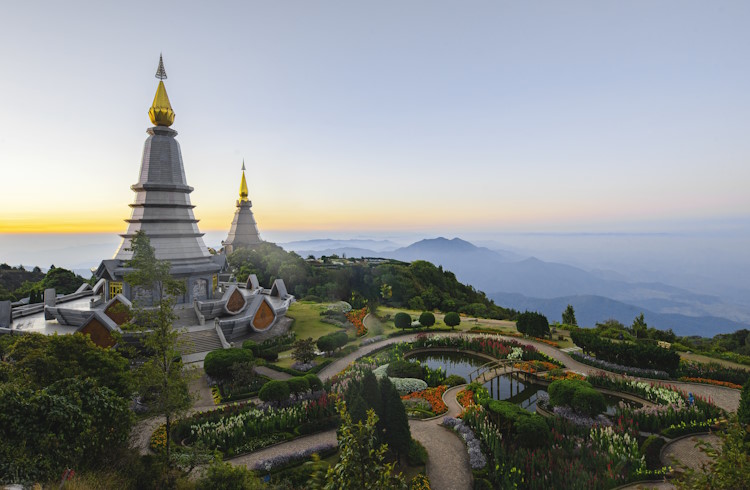
Huai Kha Khaeng Wildlife Sanctuary (inscribed on UNESCO’s World Heritage List) offers an almost unique – although far from guaranteed – opportunity to spot wild Thai tigers, along with leopards and five other wild cat species. The spectacular wetland wilderness of Talay Bua Daeng (Red Lotus Sea), meanwhile, is a lure for birdwatchers.
“Paradise” overlooked: accessible places without the crowds
Perhaps in a single-minded attempt to get as far “off the beaten track” as possible, travelers and backpackers have tended to overlook more accessible locations like Ko Samed (sometimes spelled Samet) and Koh Chang. The island of Ko Samed/Samet can be reached in less than three hours by taxi (and ferry) from Bangkok. (Be careful, however, because there’s a second Ko Samet/Samed about 215mi/350km to the southwest.) While there are some overdeveloped resorts and a party zone on the northern Ko Samed, you only need to head to more secluded bays to find little patches of veritable paradise of the sort that have long since disappeared on supposedly remoter islands.
Ko Chang (a five-hour drive east of Bangkok and Thailand’s third largest island) lies just 2.5mi (4km) from the mainland. You would think that this accessibility would have condemned the island to overdevelopment but, as part of the 250mi2 (650km2) Mu Ko Chang National Park, much of the forested interior of Ko Chang main island is still protected. What’s more, there are 51 other islands in the Ko Chang archipelago with many of them rarely seeing a visitor.
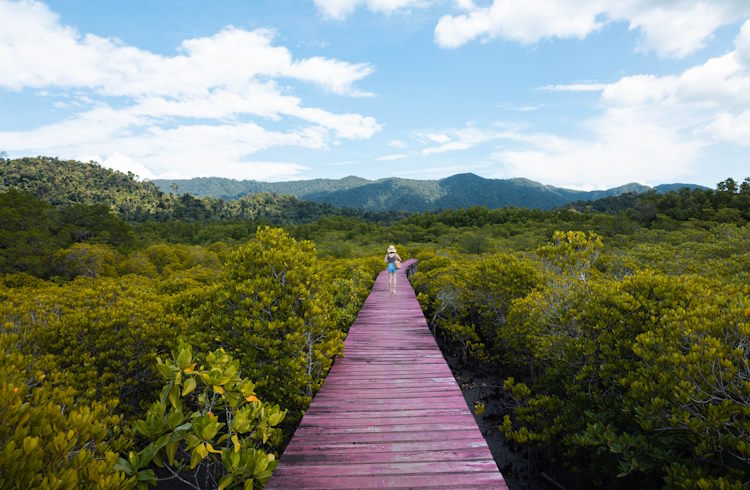
Where to find pristine beaches and islands in Thailand
The best-selling novel The Beach might have rung the death toll for some of Thailand’s most beautiful spots but, with an official count of 1,430 islands, there’ll always be a pristine tropical haven if you take time looking for it.
Shortly after the 2004 tsunami, I was sent on a CNN assignment to cover the plight of the Moken people (the last of the nomadic “Sea Gypsies”). It was the pre-Google Earth era, and I ended up hitching a ride on a fishing boat that went so far into the tangle of islands in the Andaman Sea that I was unsure if we’d accidentally encroached illegally into Burmese waters. On that trip, I landed on several beaches that had very likely never seen a foreign footprint. Mu Ko Surin Marine Park (about 37mi/60km offshore and a favorite dive location) is still home to Moken people and has some idyllic camping spots and low-key bungalows.
Phuket Island is the tourist hub for the Andaman Sea area, but the Phi Phi islands are an accessible launching pad for wilder beach-bumming. Just beware that Phi Phi Le is no longer quite as it appeared when it served as the backdrop to The Beach movie. You’ll need to get there early to avoid the crowds, but you can expect to have nearby Ko Bida and Ko Maipai almost to yourself at any time.
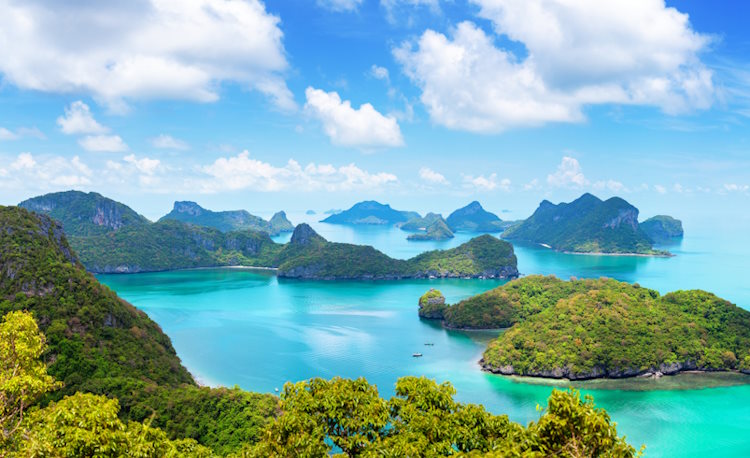
Koh Samui sees the bulk of tourism in the Gulf of Thailand while neighboring Koh Phangan, considerably less developed, becomes a tourist boomtown only around full moon each month. Even in this area there are hidden gems. Few people seem to even be aware, for example, that Ang Thong National Marine Park (lying between Ko Samui and the mainland) boasts no fewer than 42 rarely visited islands.
Related articles
Simple and flexible travel insurance
You can buy at home or while traveling, and claim online from anywhere in the world. With 150+ adventure activities covered and 24/7 emergency assistance.
Get a quote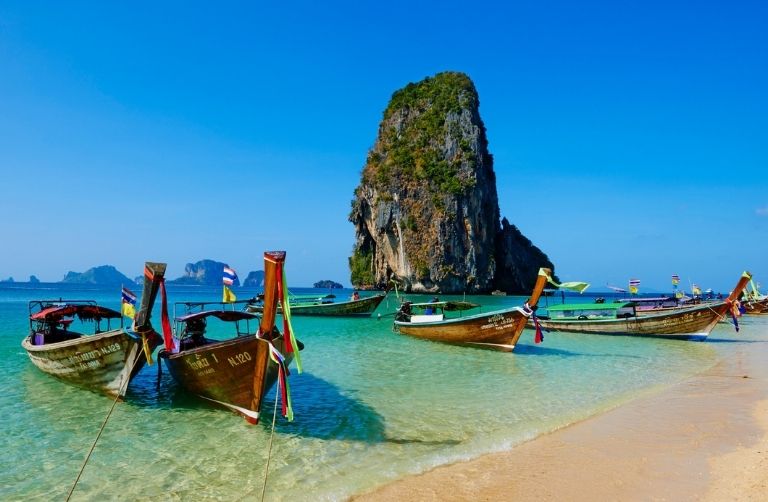
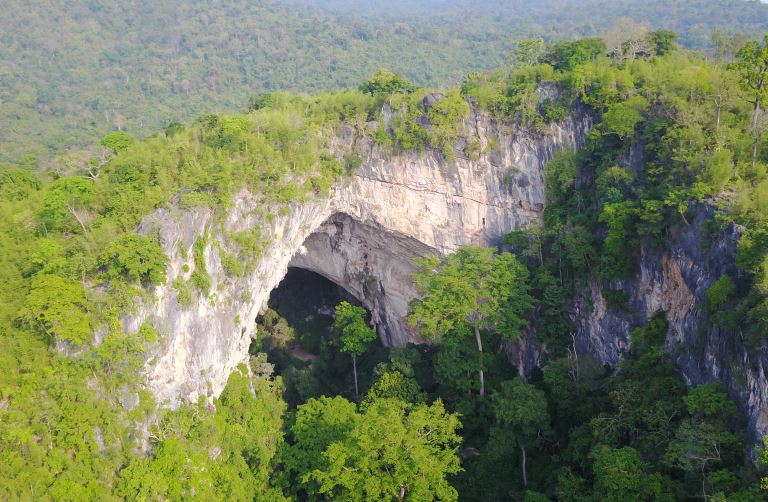
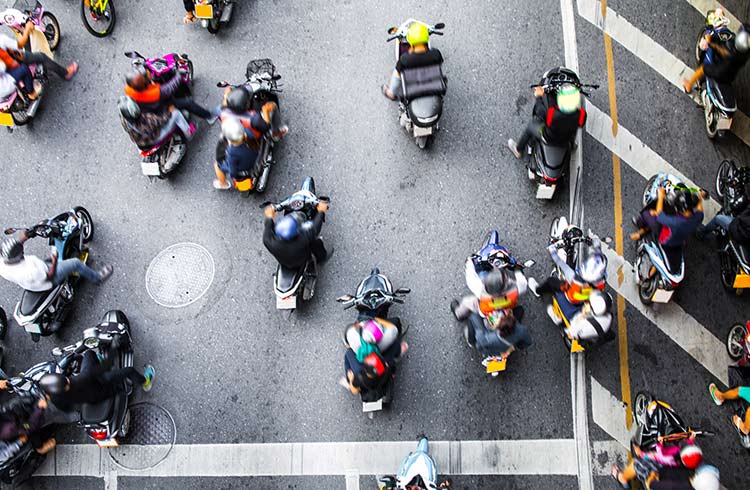
No Comments